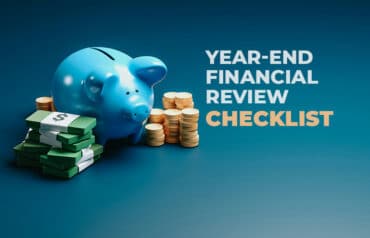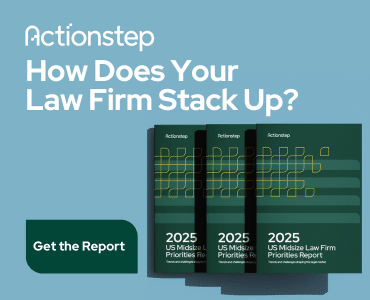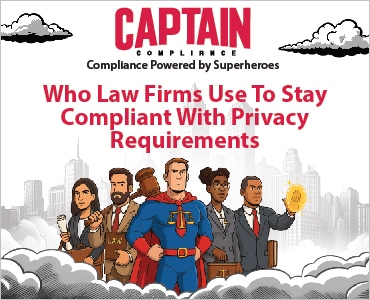What does the path to partnership look like in your law firm? Great law firms scale by mapping the transition from associate to partner step by step and developing clear, measurable requirements.

Table of contents
The biggest complaint I hear from law firm clients is, “I can’t find good people.” Shortly after that, I hear, “All my good people want more and more, and I am not going to make them a partner. So then they leave.”
Yes, they do. What did you expect? Law school and society have pounded into their heads that the ultimate goal for a lawyer is getting the “P” word on their business cards: partner.
If they aren’t working toward becoming a partner, they think they’re in a dead-end job.
At the same time, many law firm owners promote the wrong lawyers for the wrong reasons. My father started a new firm every seven to 10 years, and it took me a long, long time to figure out why. Basically, he would hire an associate, and after about five years, he would feel like he needed to make them a partner. Then, he would realize his mistake, dissolve the firm, and do it all over again. That is one extreme. Most of my clients are at the other extreme — so scared of choosing wrong that they won’t promote anybody. And that is why they lose great talent.
What many firm owners don’t realize is that “partner” and “owner” are not the same thing. Making somebody a partner does not mean giving up control of the firm. Having a clear path to partnership, however, means you are much more likely to have lawyers who stick with your firm.
Two Paths: Equity Partner vs. Non-Equity Partner
The path to partnership is a shift from lawyer to leader, from technician to owner. In most firms, there are two types of partners: non-equity and equity. They are not created equal and are not interchangeable. Each serves a purpose.
Non-equity partners have the title but not the ownership stake. They mentor, lead and originate work but don’t take on personal liability or share in the firm’s profits or losses. In some firms, a non-equity partnership is a stepping stone toward an equity partnership. In other firms or situations, it’s a tool to reward loyal attorneys who aren’t a great fit for ownership.
Equity partners, on the other hand, own a piece of the business. They shoulder risk, influence firm decisions, and profit when the firm performs. It’s a business marriage. And like any long-term relationship, it works best when expectations are crystal clear from day one.
The path to partnership is not just a checklist. It’s how you create consistency, retain talent and scale a firm that runs on purpose, not politics. This is why it is so important to map the transition, step by step.
The Journey to Partnership
The journey to partnership isn’t a one-size-fits-all sprint. It’s a progression — from associate, to senior associate, to non-equity partner, and finally to equity partner. Each stage has different expectations.
- Associates focus on billing and growing their technical skills.
- Senior associates start originating business, delegating effectively and building client relationships.
- Non-equity partners begin shaping the firm itself — training others, setting strategy and living the values that define culture.
- Equity partners are the vision carriers. They don’t just drive revenue — they drive the firm forward. They lead, they model, and they own the outcome. That ownership mindset is precisely what you should be screening for along the way.
What Makes a True Partner? Three Things
Being a great lawyer isn’t enough. Through working with hundreds of law firms, we realized a true partner needs three things:
- A specific production or origination level (or both),
- Excellence in their craft, and
- The “It Factor.”
Production and origination mean consistently hitting specific billing targets and generating business for the firm. Great partners don’t wait for work; they create it. Some firms focus on rainmakers, but having a litigator who consistently adds a zero to every verdict can be just as valuable. What’s the right mix for your firm?
Excellence in your craft means doing the work at a high level and teaching others to do the same. That includes winning cases, managing volume, filing quickly and mentoring the next generation. It also includes personal reputation and being able to burnish the firm’s reputation, whether through work in the courthouse, by teaching CLE or high marks in reviews and referrals. Partners are force multipliers.
Then there’s the It Factor. That’s culture. Leadership. Communication. Influence. Does this person walk the talk? Do they embody the firm’s core values? Are they someone others want to follow? If the answer is no, they may be a good lawyer but they’re not a partner.
The Partnership Metrics That Matter
The path to partnership is literally that — a path. It’s up to you to determine what an attorney needs to achieve before moving forward to the next stage. These should be clear, measurable and scorable requirements with metrics you can incorporate into your review process. Then, when it’s decision-making time, you just need to review the scores to see if your lawyers are ready to move up. (Read “Everyone in Your Firm Needs a Production Number.”)
Here’s an example of how you might score a potential partner (you’ll want to use your own target numbers):
1. Production and Origination
- Do they bill at least five times their cost of employment? Yes
- Are their collections at least 87%? No
- Originating work to support 75% of their own cost of employment? No
2. Excellence in Their Craft
- Sit first chair in 7 trials? Yes
- Get 12 5-star Google Reviews per year? Yes.
- Case load above 80%? Yes
3. The It Factor
- Core Value rating above 80%? Yes
- Be a walking billboard for the firm? No
- Consistently go the extra mile? No
It’s obvious from these scores that this attorney is an excellent lawyer. However, they are not meeting the firm’s origination expectations, nor are they a great reflection of the firm in public. In addition to helping you make your promotion decisions, this provides an excellent opportunity to start the conversation about how you will help them improve those skills in the coming year, and why they won’t be getting promoted.
These three measurements — production, excellence in their craft and the It Factor — give the firm a framework for promotion and attorneys a fair, transparent path forward. Everyone knows what it takes to make partner. No ambiguity, no backroom deals.
This framework also gives you a better way to decide who shouldn’t be a partner. If someone doesn’t pass the bar we’ve set, we don’t lower it — we mentor them or redirect them. Putting the wrong person in a partner seat costs the firm far more than saying no.
Partners Drive the Law Firm
We don’t promote to partnership because someone hits a billable target or sticks around long enough. We promote to partnership because someone acts like an owner: They care about the firm, push the culture, train others and build a business, not just a book. That’s the kind of person we want at the table.
The path to partnership doesn’t just build careers. It builds leaders. It builds a bench of people who can carry the firm’s vision forward when founders step away. And that is how great law firms scale. Not through luck and not through tenure. Through intentional leadership, one partner at a time.
More Profitable Law Firm Tips from Brooke Lively
For more tips on building a more profitable law firm, read:
- What Should Be on Your Law Firm’s Dashboard
- Are Your Law Firm’s Financial Systems Ready to Scale?
- Law Firm Profits: 5 Ways You May Be Sabotaging Your Firm’s Growth
- The Best Compensation Plans Use the Law of Thirds
- Law Firm Overhead: What It Is — and What It Isn’t
- Building a Law Firm That Pays You First
- Understanding Law Firm Profits — And What to Do With Them
- How Are Law Firm Owners Paid? Total Compensation vs. Salary
- Funding Growth: Are You Starving Your Law Firm?
Image © iStockPhoto.com.

Sign up for Attorney at Work’s daily practice tips newsletter here and subscribe to our podcast, Attorney at Work Today.
















